|
MAINE STATE PRISONERS 1824 - 1915, from Picton Press c2001 The following nine LEAVITT (some were spelled Leavett) names are found in the book, on pages 130-131. Three of the entries belong to the same individual, though the compiler made separate lines for each (due to varying information between them). Charles Leavitt, age 19, Birthplace: Lowell; York County; burglary; committed: 10 July 1867; sentence: 2 1/2 years Unclear who this Charles may be - or if the birth place of Lowell is in Massachusetts (no Charles here in 1850, or in birth VR) or the Penobscot County, ME one (there was no Leavitt family here in 1850 census). Eliphalet Leavitt, age 31; b. New Hampshire; Penobscot County; larceny; committed: 26 Oct 1843 for 5 years Found in the Desc. of Nehemiah Leavitt v6, pg 21, he was the son of Edward and Hannah (Sias) Leavitt, and was born in Wolfeboro, NH between 1812 and 1816. He was a veteran of the Aroostook War (1839), serving two months on the northern Maine border. On 2 Sept 1841, he was arrested for larceny in Bangor [Bangor Daily Whig, 3 Sept 1841]. In March of 1843, there were reports of two men passing "bad money" in Bangor, and Eliphalet, "a familiar jail bird", was soon arrested and the Police Court sentenced him to 30 days imprisonment and a $10 fine [Bangor Daily Whig, 14 Mar 1843]. In Oct 1843, he was charged with one count of larceny and, being a third comer to court, would receive five years in the state prison. After his release, he went to live with his brother, John L., in Carmel for a time, there in 1850 census. When the Civil War broke out, Eliphalet signed up with the 12th Maine Infantry, on 16 Nov 1861, at age 44. He did not survive, dying from chronic diarrhea in New Orleans on 12 Nov 1862. He was originally buried in Cypress Grove Cem No 2, and was later reinterred in Monument Cemetery, New Orleans. George H Leavitt, age 25; b. Manchester, NH; Cumberland County; passing counterfeit money; committed: 30 Dec 1863, for 1 year According to the Supreme Judicial Court records [Vol. 4, pg 27-9], George H. Leavitt, otherwise called Harry Lane, of Windham, Maine, used a $5 counterfeit bank bill in Windham. He pled guilty of the charge, and received a year of hard labor in Thomaston. He may have been the George H "Lavett" in Naugatuck, CT, for the 1860 census, age 21, a carriage painter, b. NH. He also could have been the man of same name who, on 1 Jan 1861, enlisted into the US Army at Boston for five years (at age 23, born Manchester, NH, a painter), but deserted from Fort Delaware on 27 Mar 1861. It is not known exactly who this George H. was, or what became of him after his release from prison. George R Leavitt, age 35; prisoner #4574; b. Maine; Penobscot County; compound larceny; committed 24 Feb 1914 for "not less than 3 yrs, and not more than 5 yrs" Harris Leavitt (no age or birth); prisoner #4506; Hancock County; assault with intent to kill and murder; committed 18 Apr 1913 for 2 yrs; transferred to insane hospital on 2 May 1913. Harris, in jail on a charge of larceny, made his case much worse when he assaulted the deputy-sheriff in an attempt to escape. He was then sent to the East Maine Insane Hospital in Bangor for evaluation. While there, he and several other patients were allowed in the basement for a smoke and recreation. Harris and another man took this opportunity to make their escape, breaking out a window and running off into the woods. They voluntarily returned the following day, hungry and footsore [Ellsworth American, 26 Mar 1913]. Following his two-year sentence, he was transferred to the State Hospital in Augusta, where he remained a patient the rest of his life. He died there on 31 Mar 1942. He had been born in Calais, Maine, on 25 July 1895, the son of George and Hattie E. (Lydick) Leavitt [his father listed in Desc. of Israel Leavitt v2, pg 70]. John Leavitt, age 26; b. Hallowell; Cumberland County; larceny; committed for 5 yrs on 22 Jan 1870 In the Portland Daily Press, on 15 Jan 1870 (pg 3), the January Term of the Cumberland County Superior Court listed the following case: Looking into the case in the Superior Court Criminal Records [Vol. 1, pg 434], it gives the name of the defendant as "Edwin Clark, otherwise called John Leavitt, of Westbrook". On 12 Dec 1869, Edwin/John stole a gold watch, chain, US Treasury Notes, etc from the dwelling house of Jacob Shattuck. The 1870 census for Thomaston shows "Edwin Clarke", age 26, in the State Prison. There was a John Leavitt in Hallowell during the 1850 census, age 8, listed as born in Nova Scotia to Irish parents William and Hannah Leavitt. The family's whereabouts after this date is not known. John Leavitt (no age, birth, or county); assault and battery on jailor; sentenced 20 Dec 1879 for 5 yrs; discharged on 6 Aug 1883, served 3 yrs, 7 mos, 16 das; pardoned by Gov. Robie
John Leavitt, 19; prisoner #2455; b. Ripley; Somerset County; assault and battery of jailor; committed 9 Jan 1880 for 5 yrs John Leavitt, a. 28; prisoner #2455; b. Ripley; Somerset County; assault and battery on jailor John L. Leavitt, the son of Jonathan Jones Leavitt [Desc. of Nehemiah Leavitt v6, pg 67], was born in Ripley, Maine on 24 May 1860. In the 1870 census, he was with his parents in Ripley, age 9. In 1880, he was in Thomaston (state prison). He was pardoned by the governor and released on 6 Aug 1883, only to die 16 days later, in Gardiner on 22 Aug, aged 23 yrs.
0 Comments
68-year old John Leavitt of Amherst, New Hampshire sold a cow on the 21st of September, 1854, for 13 dollars. The buyer gave him a $10 and a $5 bill, with John handing back a $2 bill for change. Son George A., upset that "he had sold the cow without saying anything to him about it", approached his father and demanded the money, pulling out a jack-knife and threatening to put it through him if he didn't give him the cash. His father handed over the $15., and contacted the authorities. George would be arrested, and his case soon went to trial. On Friday, 10 Nov. 1854, the jury found him guilty. He was sentenced to one day of solitary confinement, and to hard labor at the State Prison...for LIFE. A life sentence for George Alladin Leavitt however, was rather short. He died in prison just one year later, on 30 Nov 1855. This family is found in the Descendants of Samuel Leavitt, on page 119-120. The court case, as reported in the Farmer's Cabinet, can be found HERE.
A burial place for George A Leavitt has yet to be found. He is not listed among the other family members buried in Amherst's Meadow View Cemetery. THOMAS LEAVITT, of Hampton, New Hampshire and Parsonsfield, Maine, is found in the Descendants of Thomas Leavitt genealogy, pages 58-59. The placement of a first born son named William in this family has always raised questions, so research was done in an attempt to solve that mystery, while fixing noticeable errors. 1. An exact birth date (or baptism) for Thomas has not been found, but this genealogy may have got the "abt. 1747" year from the 1924 book "The Leavitts of America"(pg. 4). His parents, Amos and Elizabeth (Varrell), married on 13 Jan 1744 [Hist. of Hampton Falls, pg 136], not 1740, as printed in the History of Hampton and our own genealogy, so his birth would be from circa 1744 onwards. His death took place prior to 10 Sept. 1808, when his son Jeremiah submitted a bond for administration of estate [York County Probate, file #11296], the widow Abigail not able to do so herself. The 1815 death date belongs to another man...see next. 2. The Thomas Leavitt who was a private in the 45th Regiment, US Infantry, was from Chichester, New Hampshire. This unit did not exist until the War of 1812, and that Thomas died (8 Feb 1815) while stationed at Sacket's Harbor, New York. His widow Polly filed for a pension (the Pension Roll of 1835 lists their children). They are also in the Desc. of Thomas Leavitt genealogy, pg 98. 3. "Mr. Thomas Leavitt & Miss Abigail Tucke" were married 2 July 1772 [VR of Hampton, NH, Vol. 2, pg 215]. Dow's History of Hampton, pg 1020, lists her as a daughter of John Tuck and Sarah Godfrey, b. 30 Dec. 1749. Her brother John (Jr) removed to Parsonsfield around 1800, about the same time as she did. Thomas Leavitt was co-administrator of his father-in-law's estate in Hampton (after 1792). He and his wife were mentioned as heirs in probate [Rockingham County file #5821]. 4. Thomas would have been the eldest of that name, if born ca 1747. His marriage record, along with the baptisms of his children, as well as land deeds, do NOT give him a "Junior" label. The "Jr" in Hampton would have been the son of Jonathan, born 1760. A "3rd" Thomas, seen in the tax lists in 1798-1801, was likely Thomas' son, born in 1776. 5. In the New Hampshire State Papers, Vol. 30, Thomas Leavitt is listed as one of the Hampton signers of the Association Test on 4 June 1776. The only other Leavitt name in town was Jonathan. 6. The 1810 census for Parsonsfield, as seen in the clipping below, actually says "Ww of Tho's Leavitt", the "Ww" an abbreviation for "widow". The two males in the Widow Abigail's household are unknown, aged 10-15 and 16-25. The female mark is also under the 26-44 column, though she would have been nearly 60 years of age. Jeremiah's mark in row above is also off, as he was 29 in Aug 1810, not 16-25. He didn't marry until Nov of that year, but has a female of same age in h.h. 7. The History of Hampton doesn't mention anything about Parsonsfield under Thomas, but rather says "till late in life, when he sold his estate, bought by Amos Towle, and removed from town" [History of the Town of Hampton, pg 815]. Thomas and Abigail, on 6 Sept. 1800, sold three parcels in Hampton to Samuel Brown [Rockingham County Deeds, Vol 167, pg 99]. One of those lots, in turn, was sold by Brown in Feb. 1803 to Amos Towle 3d. Thomas was still in Hampton in Jan. 1801 when he sold some meadow ground to John Drake [Rock. County Deeds Vol 156, pg 359], but soon after removed to Parsonsfield, as the 1801 Hampton Tax List only lists one Thomas (who was the son of the above Thomas). 8. As William, supposed first child of Thomas, was born in 1768, it clearly did not take place in Parsonsfield, as the Desc. of Thomas Leavitt book states. This town was not deeded to Thomas Parsons and his associates until August 1771, and again in Dec. 1774, with the settlement beginning the following spring. No evidence that Thomas had a first (unknown named) wife, or that he had a son named William, has yet been found. If the only reasoning behind his placement with the family of Thomas was due to the misreading of the 1810 census (other than the fact that they had both lived in Parsonsfield), then this connection should be disregarded, and research into other families needs to be done to find the true origins of William. 9. Thomas (Senior), in the 1790 Hampton, NH census, is listed with 2 males 16+, 2 males under 16, and 3 females. Himself and son Moses are the older males, Thomas and Jeremiah being the younger, while the three females would refer to his wife Abigail and 2 of their 3 daughters born before 1790 (likely Mehitable and Betsey, both proven to have grown to adulthood). 10. The name Thomas Leavitt is found in at least seven enlistment rolls during the Revolutionary War. Several belong to Thomas of North Hampton, proven by his pension filing. The Thomas who served as a private under Capt. Henry Elkins in Col. Poor's Regiment is likely the correct man, as this company was raised in Hampton and stationed at Pierce's Island, Portsmouth in Nov. 1775. He may have also served in Capt. Nathan Sanborn's company, Col. Stephen Evans's Reg't, from Sept to Dec 1777, sent to Saratoga, NY to reinforce the Continental Army. PARSONSFIELD No land deed was found where Thomas Leavitt purchased land in Parsonsfield, Maine. However, both he and wife Abigail sold 67 acres from lot #142, 8th range, to their son Jeremiah on 19 Jan 1807 [York County Deeds, Vol. 79, pg 72]. The original lot owner was John Mudgett, who sold the 96 acre parcel (w/ dwelling house and other bldgs) to John Tuck of Hampton on 18 Oct 1796 [York County Deeds, Vol. 62, pg 94]. Since Abigail's father was deceased in 1792, this John should have been her brother. Somehow, most of this lot would end up in Abigail's possession (no deed yet found). Thomas' probate in 1808 mentioned he still had 20 acres of land, his widow receiving her dower (about 7 acres) set off from this lot. John Tuck still owned a small piece of lot 142 in 1806, when he sold it (and other lots) to his sons John and Jeremiah Tuck. In 1833, the surviving heirs of Thomas and "Nabby" Leavitt sold off their rights and interest of this 7 acre (dower) property, "now occupied and improved by John Leavitt" [York County Deeds, Vol. 362, pg 91]. They were Moses of Hampton, and Jeremiah Leavitt, Widow Betsey Granvill in her right, Joseph Libby and wife Mehitable, in her right, all of Parsonsfield. This John was the son of Jeremiah, and his property can be seen as "J. Leavitt" on the 1856 map of Parsonsfield below. The children of Thomas and Abigail (Tuck) Leavitt:
i. Moses, bpt. 16 Apr 1775, d. 27 Jan 1846. Married 7 Dec 1794, Sarah Towle, dau. of Amos ii. Thomas, bpt. 25 Aug 1776, d. 20 Apr 1817. Marr. Polly Batchelder iii. Mehitable, bpt. 25 Oct 1778, d. 10 Apr 1857. Married 1st, 28 Sept. 1801, Thomas Granville; 2nd. Joseph Libby. iv. Jeremiah Tuck, bpt. 24 Sept 1780, d. 25 Nov 1839. Married 1st, 29 Nov 1810, Margaret Libby, 2nd, 3 Mar 1831, Sarah Chase. v. Sarah, bpt. 30 Nov. 1783. No further record, perhaps died young (pre-1790?) vi. Elizabeth (Betsey), bpt. 15 Mar 1789, d. 14 May 1866. Married, 1 Feb. 1817, George Granville. vii. Love, bpt. 10 Jun 1792. No further record, perhaps died young. All dates of baptisms from the Vital Records of Hampton, NH, Vol. 2 (Sanborn & Sanborn c1998), the source being the Third Book of Records of the Church of Hampton. Following the NALF Reunion at Hart's Turkey Farm Restaurant, on 25 June 2022, and a visit to the Historical Society Museum downtown, it was time for a hike. The Page Pond Community Forest in Meredith has several parking lots, and I chose the southern entry point, on Barnard Ridge Road.
Next is the LEAVITT Cemetery. There are only two stones here with inscriptions: Francena, daughter of John & Almira Leavitt, died 30 April, 1839, AE 5 mos Francena, daughter of John & Almira Leavitt, died 9 Oct 1841, AE 11 mos & 14 days John Leavitt was the son of Joseph, a son of the Weare Sr. who lived on this land. Weare Sr., who died in 1829, and wife Betsey (d. 1818), may lay here. When Weare Jr. sold his deceased father's half of this lot in 1830 [Strafford County Deeds: Vol. 149, pg 142], the deed mentions "excepting the burying ground, thirty feet square". There is another burial directly beside them, marked with field stones, whose size suggests another young child. A few feet away are a couple of other field stones, their positioning seemingly showing perhaps two other burials. On the way to the mill dam, there is a fine view of Page (aka Little) Pond. Sewall (or Sewell) Leavitt was another son of Joseph Leavitt. He purchased, from James Gilman, a lot below Little Pond in May 1830, and built a saw mill and dam on the brook. He bought another piece from Gilman adjacent to this in 1835. Only a year later, on 25 Nov 1836, he sold it all to John Page [Strafford County Deeds: Vol. 172, pg 61], and would relocate to Manchester, NH. Lastly, using part of a map from "NH Stone Wall Mapper", some of the old lot lines, or parts of them, can still be seen (in purple). I've roughly outlined the bounds of Lot #42, 3rd Division, and circled the Leavitt cemetery on the knoll, and the mill dam locations.
From the 1892 map of Meredith, New Hampshire, published by D. H. Hurd & Co. of Boston, MA. Full map available on the David Rumsey Map Collection website. 1. "A. E. Leavitt" Arthur Eastman Leavitt (1831-1911), grandson of Dudley Leavitt (1772-1851), who lived on the former property of the almanac maker. - Desc. of Moses Leavitt v1 pg 97/120 2. "R. Veazey" Home of Rufus L. Veasey. He purchased this property from Arthur E. Leavitt on 29 Aug 1866, two months after Arthur acquired the land from the heirs of John D. Leavitt. John was the son of Nehemiah Jr (1787-1850), and grandson of Nehemiah Sr (abt 1752-1829). Arthur and John were 5th cousins. 3. "Mrs. Leavitt" Olive (Bartlett) Leavitt was the widow of Daniel (1817-1858), son of Nehemiah Jr (1787-1850). Of her five children, only Nancy survived to adulthood. Olive was living in Laconia by 1895, presumably with her daughter, but still held on to her village property. - Descendants of Nehemiah Leavitt v6, pg 55 4. "Mrs. A. Leavitt" Currently unknown who this person was. In 1880 and 1900 Meredith censuses, there are no women with an "A" first name. If she was using her husband's name, there is only a match with Arthur, and his wife Elizabeth was with him in both censuses. It has yet to be researched if an "A' named Leavitt owned property here, but hadn't lived in town. A "D. Philbrick" is on this spot in the 1860 Meredith map. 5. "G. Leavitt"
George Smith Leavitt (1840-1905), son of Joseph and Julia A (Smith) Leavitt. He moved to New Hampton after 1892, and died in Laconia. He was buried in New Hampton. [Desc. of Nehemiah v6, pg 69] 6. "W. Leavitt" Warren B. Leavitt (1834-1909), the son of Bradstreet [Desc. of Nehemiah v6, pg 52]. Warren is buried in Oakland Cem, Meredith Center, though father and grandfather Samuel are both found in the family plot on this farm. 7. "T. Leavitt" Thomas L. Leavitt (1828-1902), son of John and Sarah (Edgerly) Leavitt. He and sister Mary (both single) had moved to Gilford, later to Lakeport (Laconia), but still had the old homestead in Meredith. Their parents are buried there, off of Leavitt Mountain Road. - Nehemiah line 8. "Miss N. J. Leavitt" Nancy Jane Leavitt, daughter of Thomas and Sarah Jane (Randlett) Leavitt, never married, and lived with her parents. Being the only heir when they passed in the 1880's, she inherited the farm. [Desc. of Nehemiah v6, pg 83] |
NALF NotesUpdates about our Leavitt genealogy research, our DNA projects, and other notes to keep our membership informed. Archives
September 2023
Categories
All
|
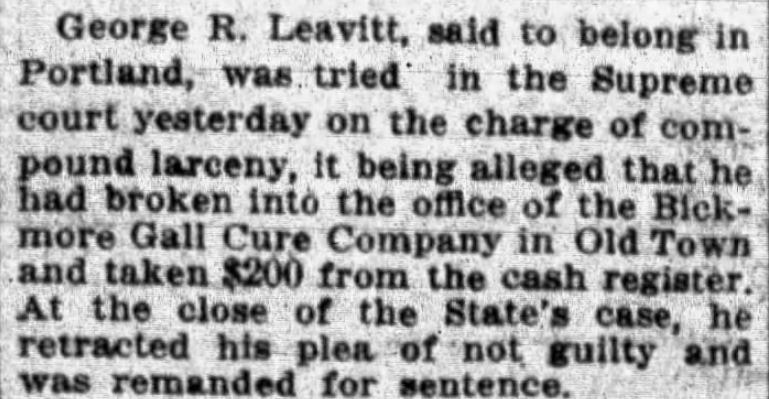


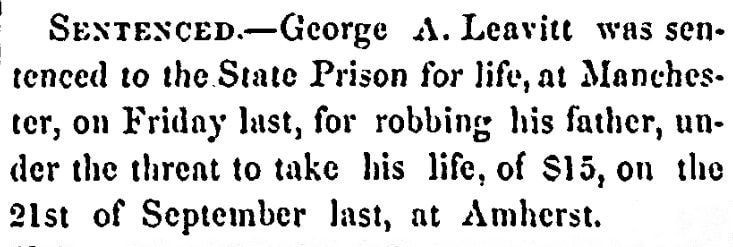

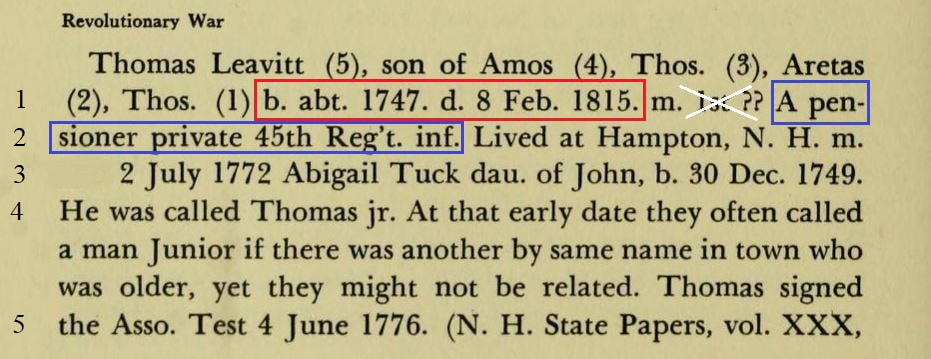
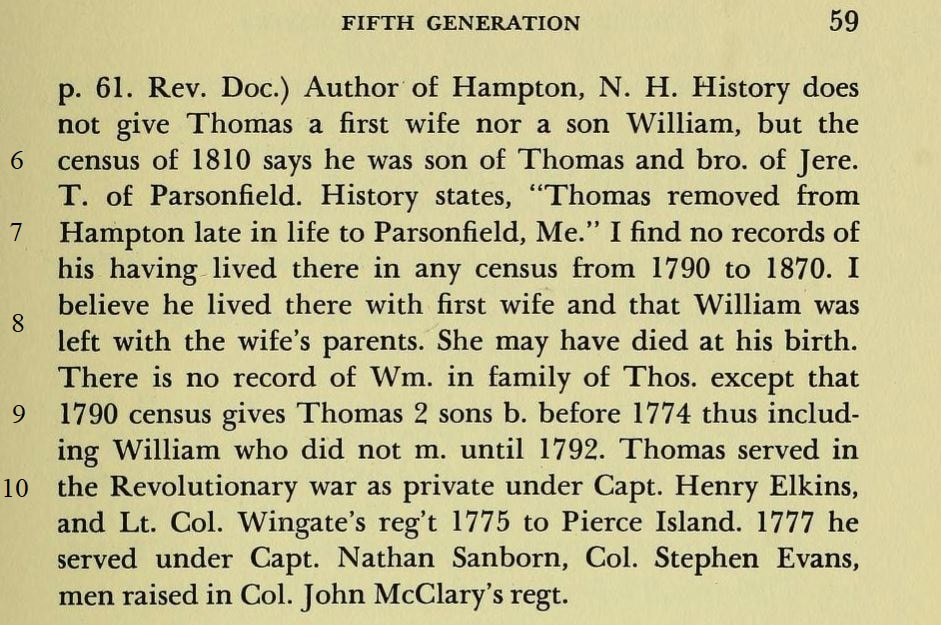


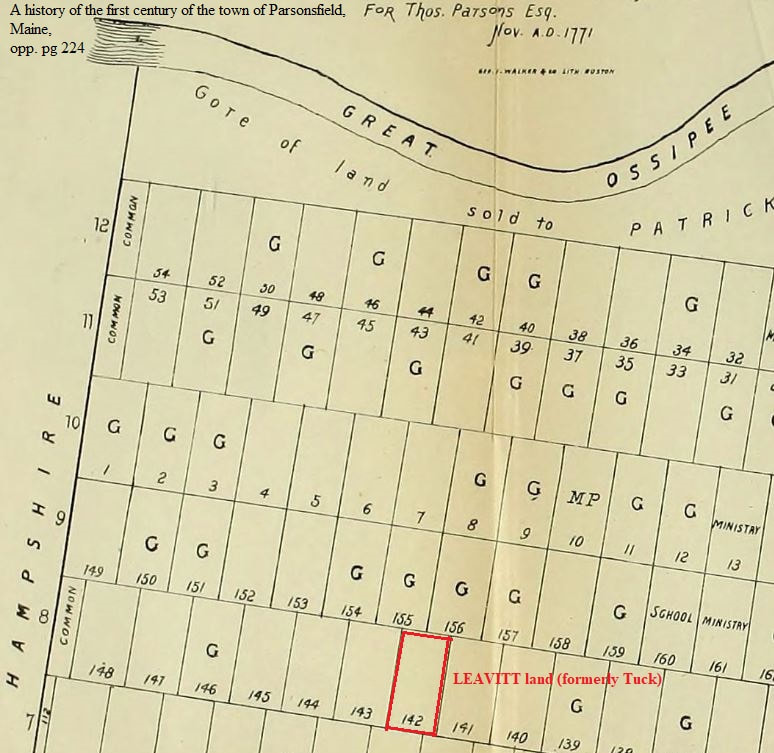
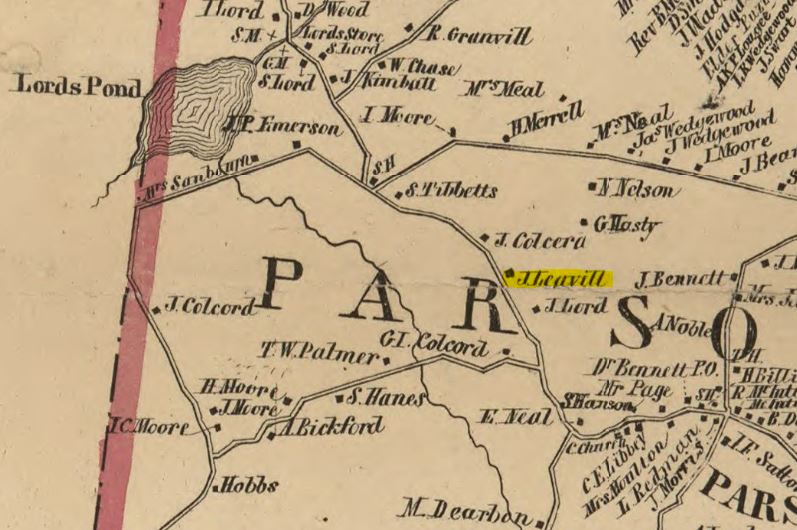
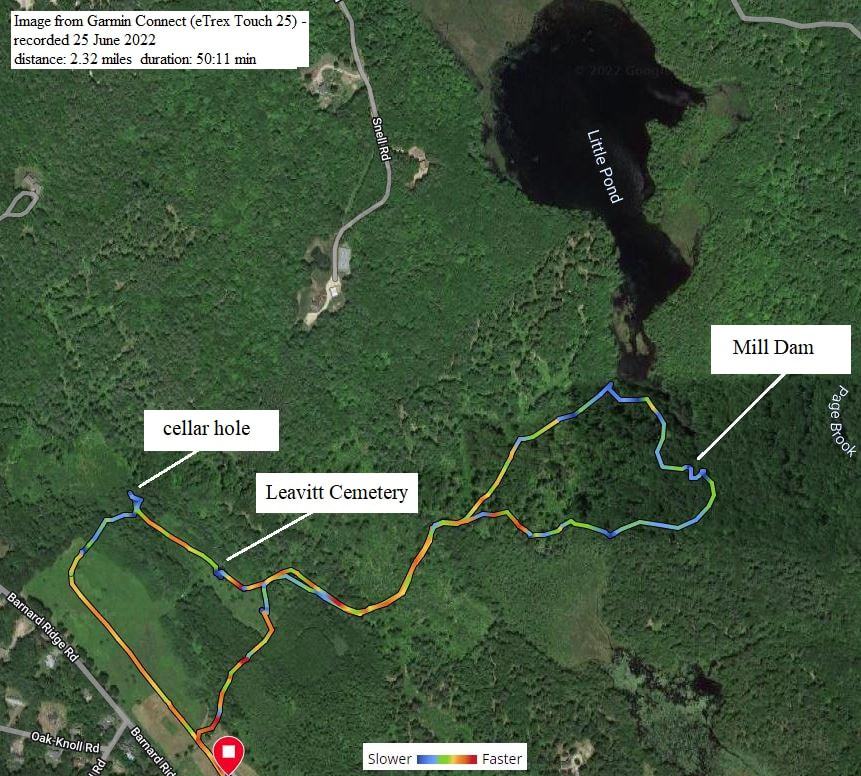
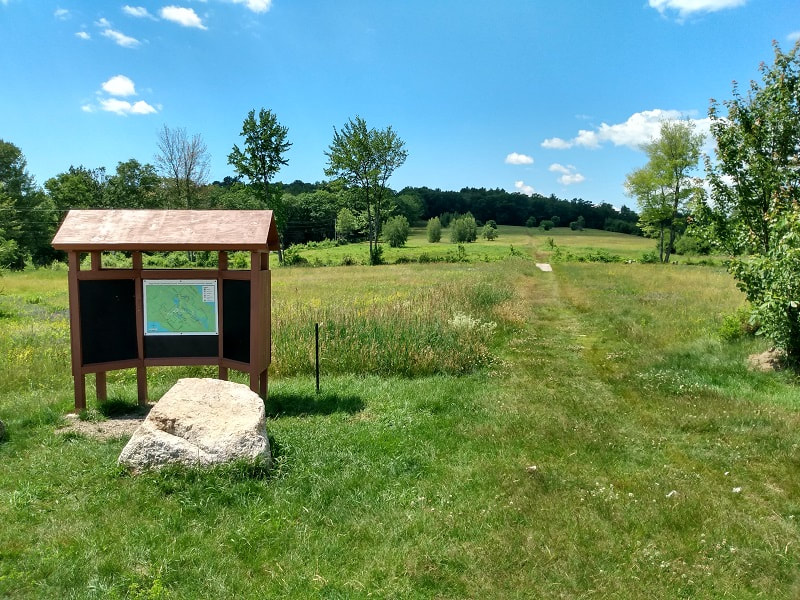
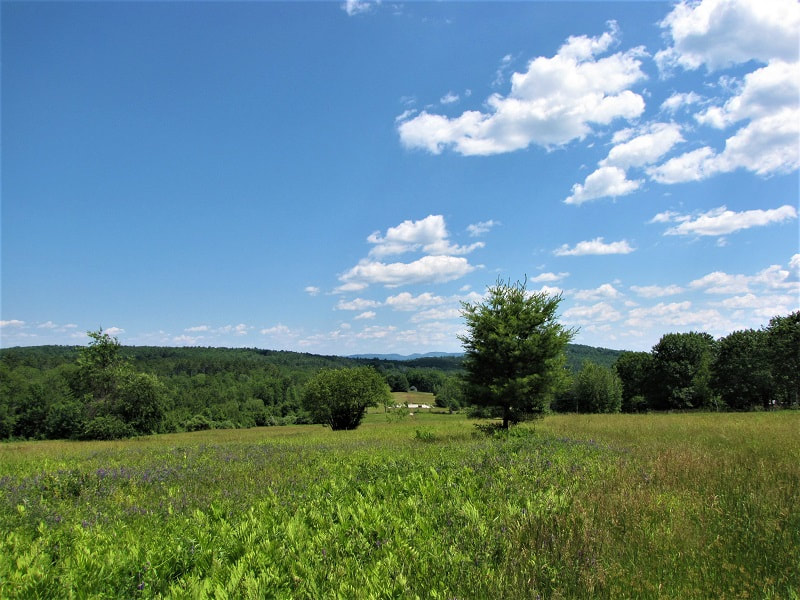

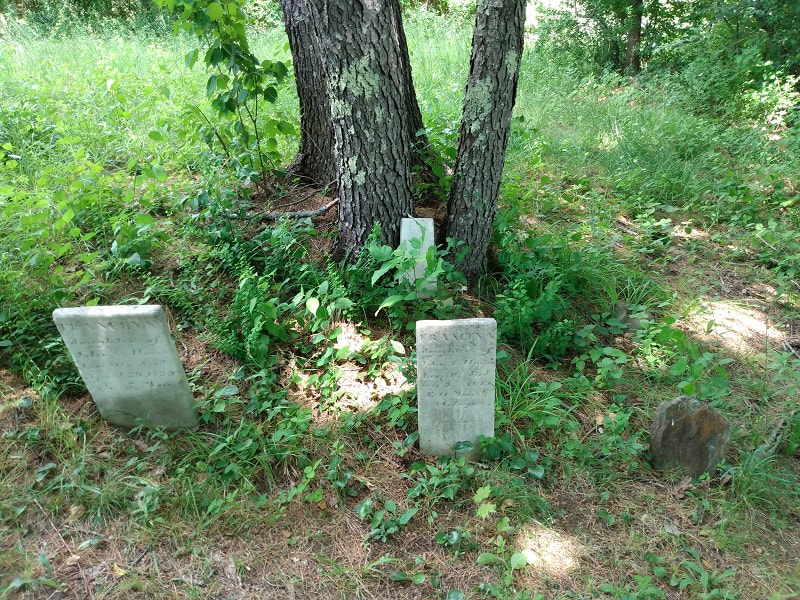
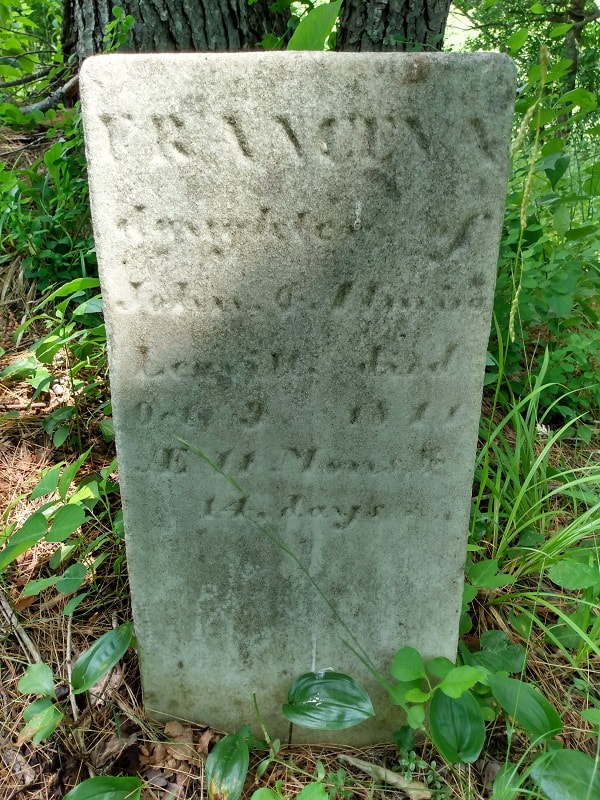
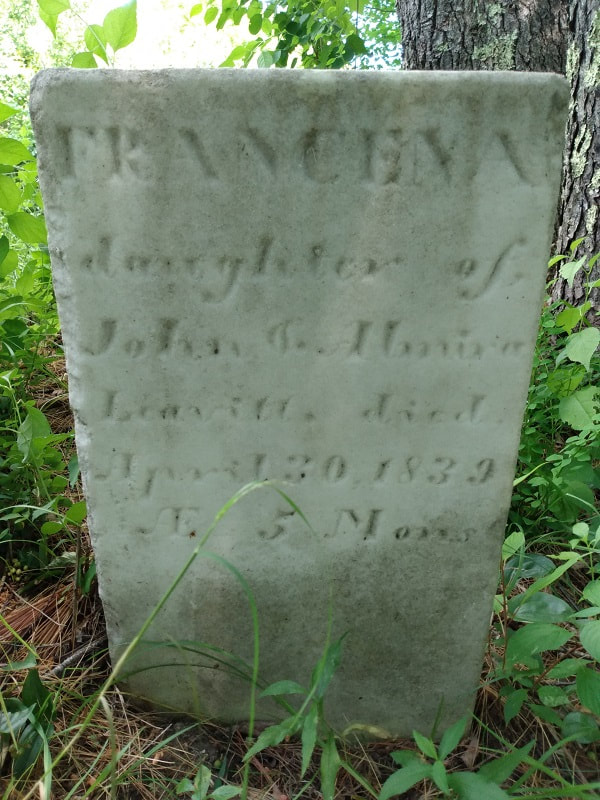
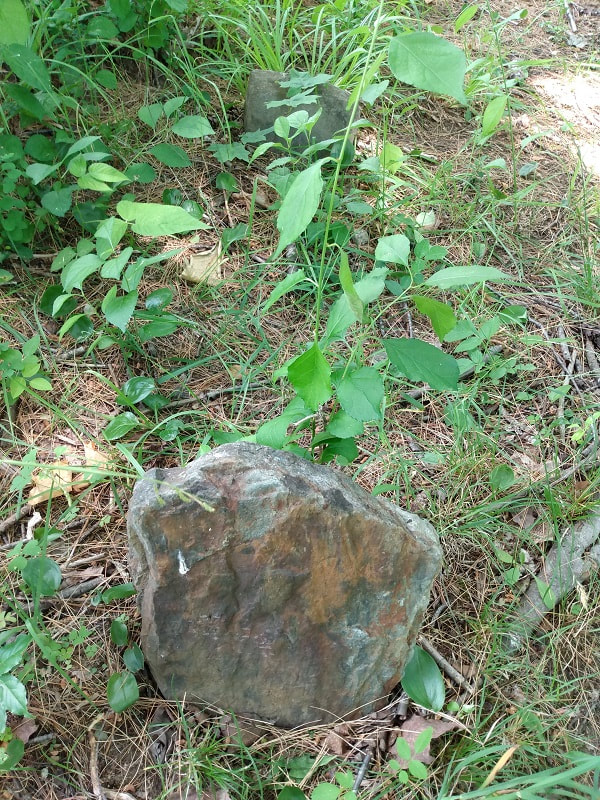
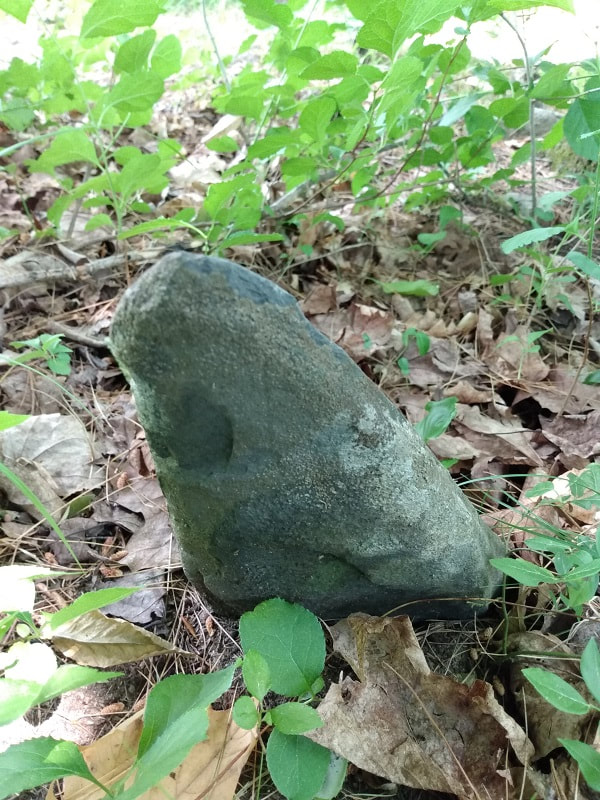
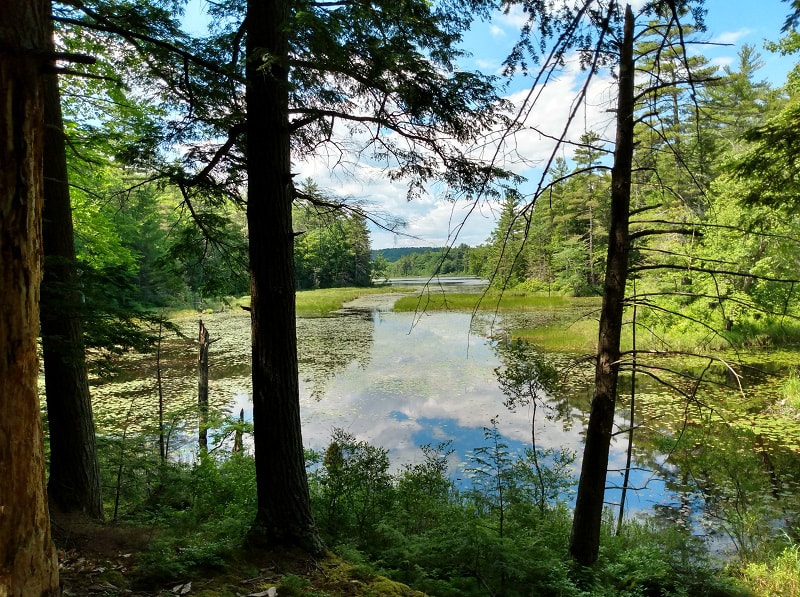
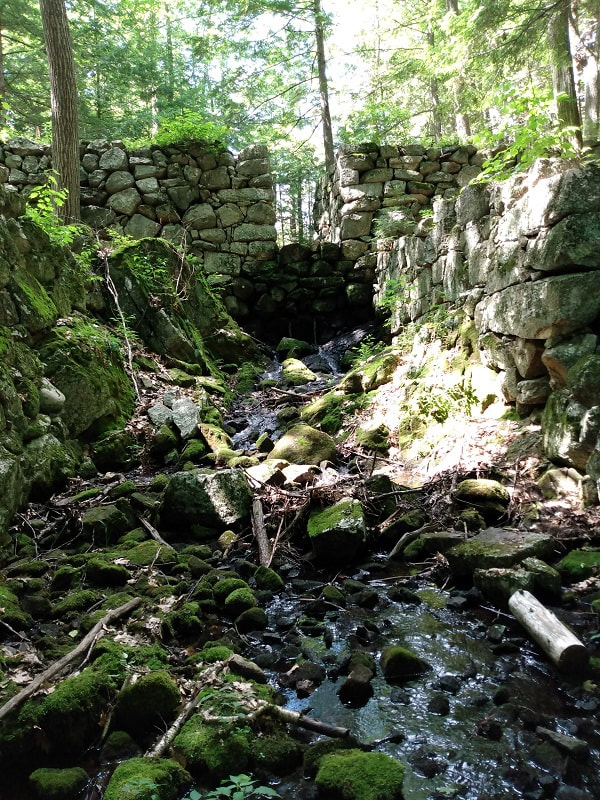
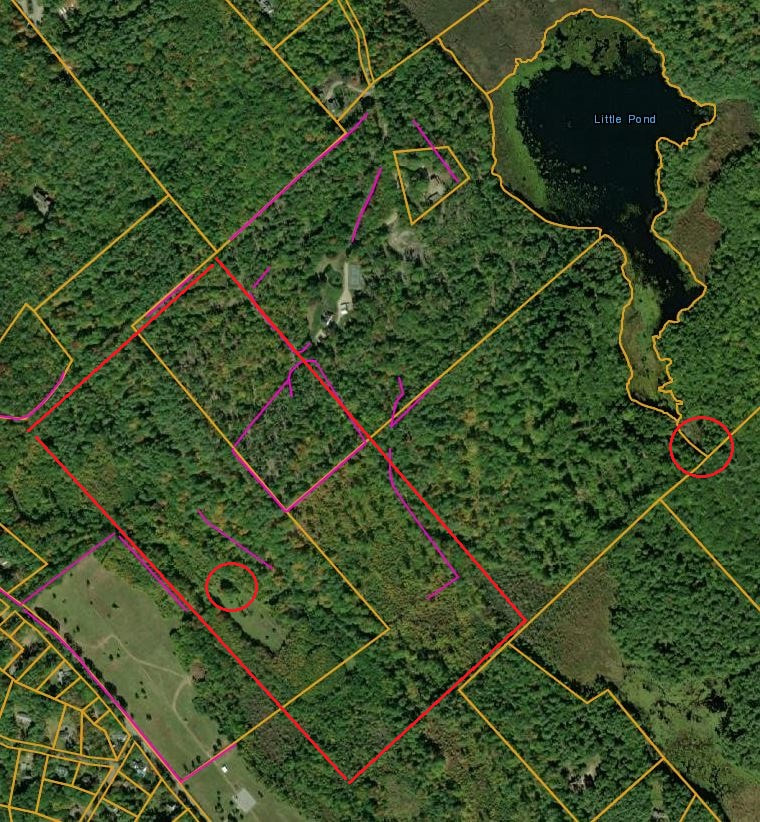
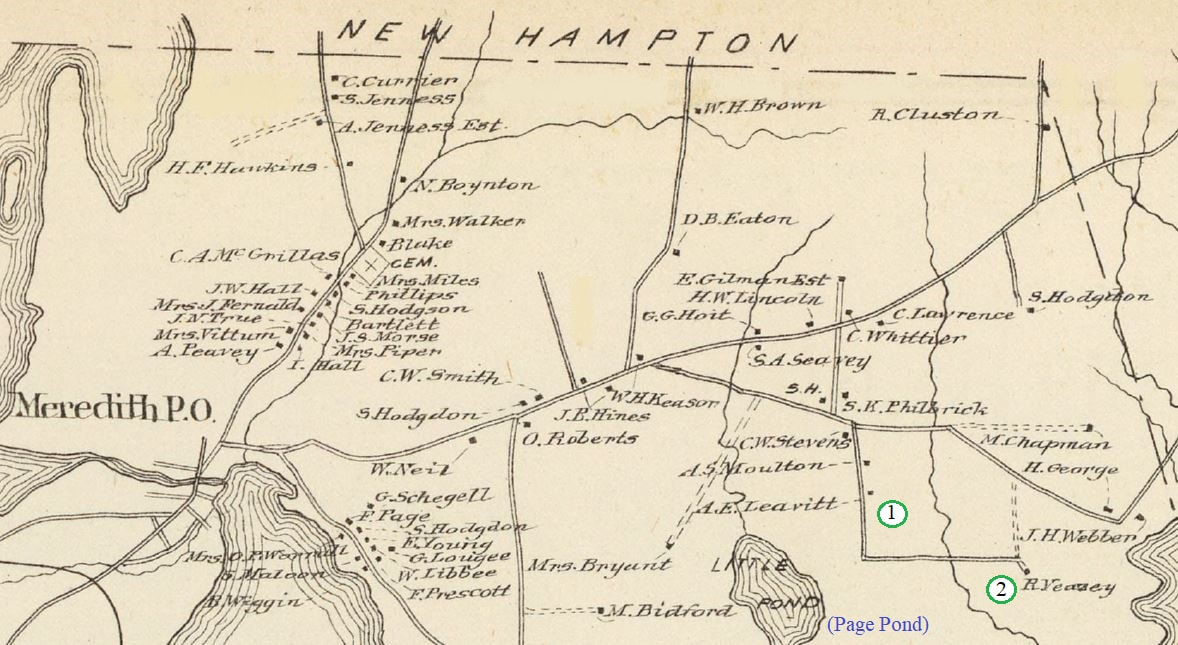

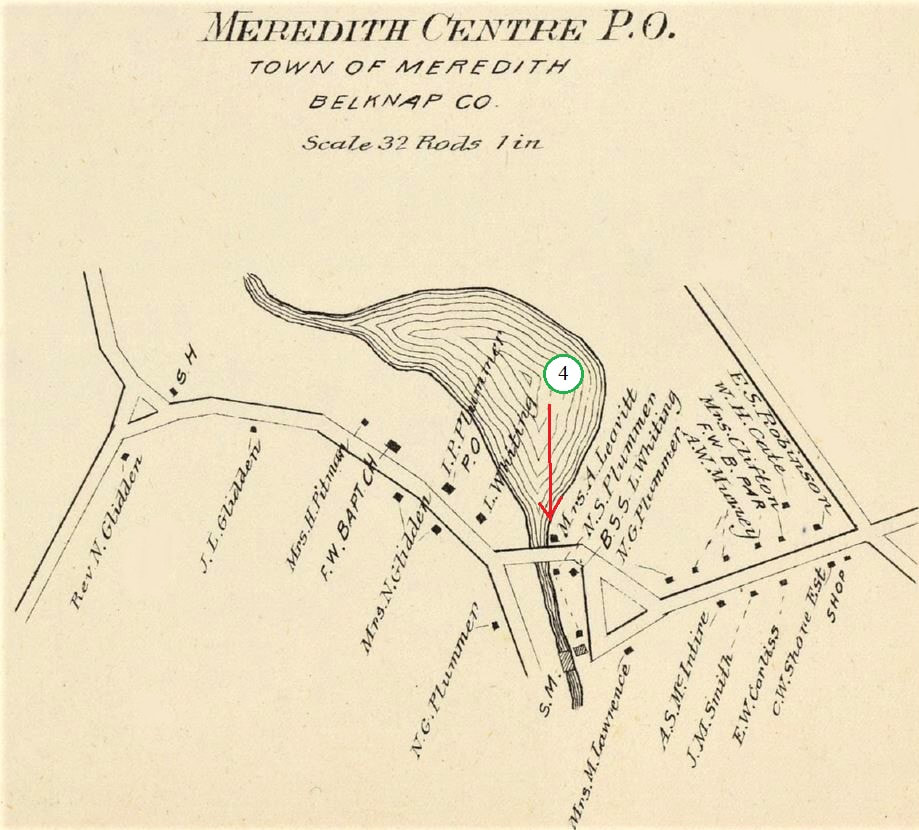
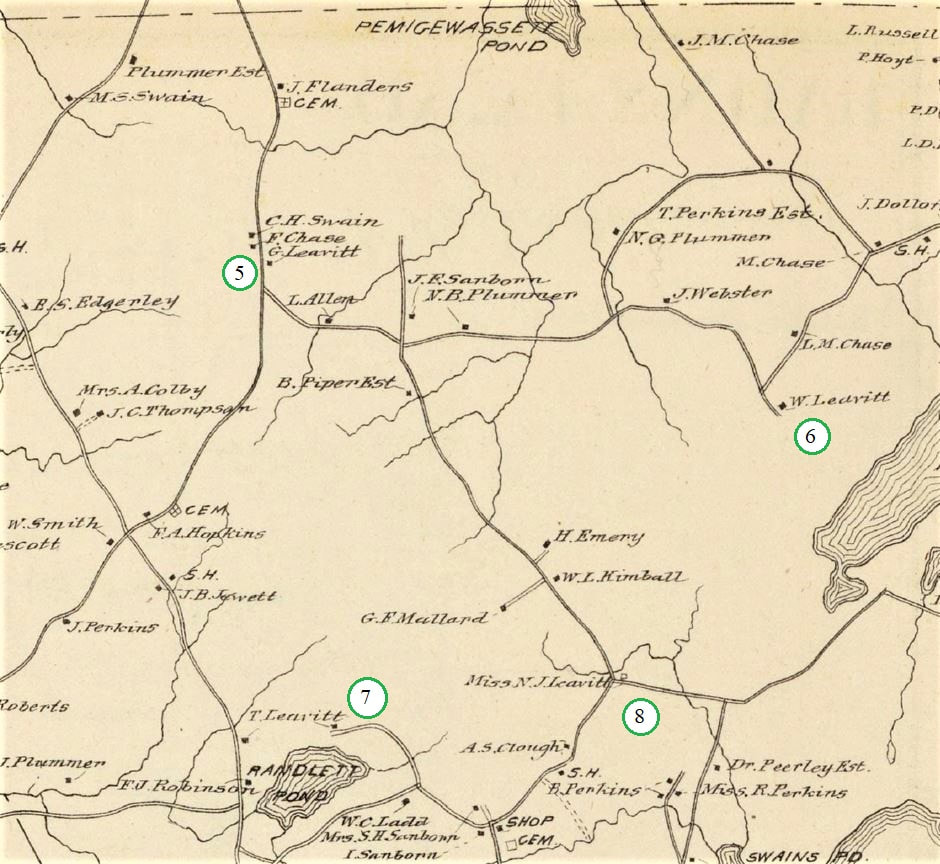
 RSS Feed
RSS Feed